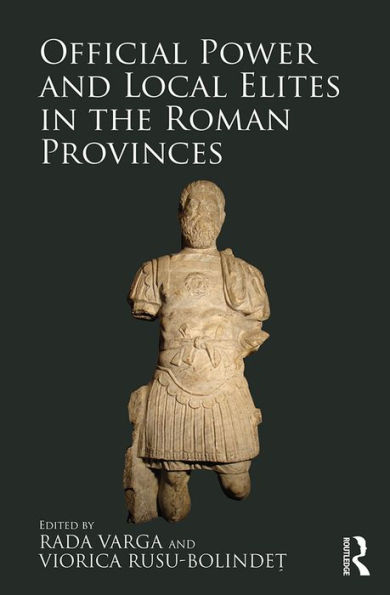Table of Contents
List of figures
Notes on contributors
Preface
I. Local elites in West Roman Greece: the evidence from Thesprotia and Preveza (Ourania Palli, Georgios Riginos, Vasiliki Lamprou)
I.1. The historical context
I. 2. The passage to Roman rule and the composition of local elites
I. 3. The spread of villa culture in Western Epirus
I. 4. The testimony of grave architecture
I. 5. Discussion
I. 6. References
II. Collective mentality and πραότης: ruling classes in the Eastern provinces in literature, linguistics and epigraphy. A "vademecum" for the politician. (Francesca Zaccaro)
II. 1. A turning point for the Roman Empire’s collective mentality: between first and 2nd century BC
II. 2. Πραότης before Empire: the case of oratory age
II. 3. The imperial shift: the case of Plutarch’s writings as a "vedemecum" of the politician
II. 4. The politician between city and family
II. 5. References
III. Roman State Structures and the Provincial Elite in Republican Iberia (Benedict Lowe)
III. 1. Magistrates as patrons
III. 2. Patrons and communities
III. 3. The granting of citizenship
III. 4. Hospitium
III. 5. Conclusions
III. 6. References
IV. Routes of Resistance to Integration: Alpine Reactions to Roman Power (Hannah Cornwell)
IV. 1. Introductory ideas
IV. 2. The Geopolitics of the Western Alps
IV. 3. Routes and road–building
IV. 4. Resistance and integration in the Cottian Alps
IV. 5. Conclusions
IV. 6. References
V. The Futility of Revolt: Pausanias on local myths of freedom and rebellion (Lydia Langerwerf)
V. 1. Pausanias Periegetes?
V. 2. The Fall of the Achaean League
V. 3. The Rise of the Naupactians
V. 4. Conclusion
V. 5. References
VI. Palmyrene elites. Aspects of self-representation and integration in Hadrian's age (Stefano Magnani, Paola Mior)
VI. 1. Some epigraphical evidence
VI. 2. Archaeological evidence (Funerary contexts; Religious and public buildings)
VI. 3. Conclusion
VI. 4. References
VII. Provincial landmarks of the official power. The praetorium consularis of Apulum (Rada Varga, Viorica Rusu-Bolindeț)
VII. 1. The praetorium of Apulum
VII. 2. The artefacts
VII. 3. The votive monuments
VII. 4. The funerary inscriptions
VII. 5. Conclusions
VII. 6. References
VIII. Power at the periphery: Military authority in transition in late Roman Britain (Rob Collins)
VIII. 1. Introduction
VIII 2. Roman Army Structure from the First to Fifth Centuries
VIII. 3. Commanding Officers from the Wall, c. 120–300
VIII. 4. The Materialities of Command
VIII. 5. The Vindolanda Praetorium
VIII. 6. Discussion
VIII. 7. Conclusion
VIII. 8. References
IX. Administering the Empire: The unmaking of an equestrian elite in the 4th century CE (Mariana Bodnaruk)
IX. 1. Prerequisites
IX. 2. Honorands
IX. 3. Awarders
IX. 4. Building inscriptions
IX. 5. Conclusions
IX. 6. References
X. Kinship, Conflict and Unity Among Roman Elites in Post-Roman Gaul: the Contrasting Experiences of Caesarius and Avitus (Leslie Dodd)
X.1. Official power in barbarian Gaul
X. 2. Imperial offices in post-Imperial Gaul
X. 3. Office, power and kinship in the Church
X. 4. Kinship and the elections of Caesarius and Avitus
X. 5. Explaining the difference: ecclesiastical kinship in context
X. 6. Caesarius and Chalon-sur-Saône: kinship and conflict at the civitas level
X. 7. Conclusion
X. 8. References



